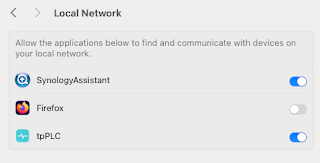New features and enhancement in this release include:
• Support for the latest IBM WebSphere Portal Beta
• Support for a client-side mobile web UI architecture, for performance and scalability benefits - see link below for more details on this feature
• Automated support for Dojo Mobile, for an enhanced user experience on mobile devices
• Enhancements to the Web Experience Factory Designer IDE and developer tools, for improved productivity
• Support for the latest IBM software, to ensure simplified deployment and compatibility
• CMIS (Content Management Interoperability Services) builder, for integration with content management systems such as Filenet and Sharepoint 2010
The attachment below contains samples files for use with a lab on creating mobile/multi-channel web applications with Web Experience Factory.
IBM® Web Experience Factory (formerly WebSphere® Portlet Factory) is a powerful and flexible development tool that allows developers to rapidly build, customize, and deploy portlets to IBM WebSphere Portal. As a user navigates across various portal pages, WebSphere Portal server maintains the current state of the Web Experience Factory portlets and caches their view state.
Returning users might come to a previously visited page, either using portal page navigation from the theme or through wiring, links from other portlets, or through some other navigation mechanism. When users return to a previously visited page, they are presented with a cached view of the portlet.
Each portlet's state is independently maintained by WebSphere Portal so that, when a user navigates away from a portal page and then later returns, the portlet's state is persisted across page views. This is the default WebSphere Portal and Web Experience Factory behavior, and the cached view for the various portlets is cleared only when the user logs out and logs back in.
In some cases, however, a portlet project may present the developer with a requirement to consistently display a Web Experience Factory portlet, using a page view that reflects a portlet's initial visual state. For these use cases, it is desirable to override the default WebSphere Portal and Web Experience Factory behavior by displaying portlet page views that ignore the portlet's cached state.
This article explains the detailed steps to achieve this scenario in a Web Experience Factory portlet and briefly describes additional strategies to achieve a similar outcome, using a sample solution to guide you through these steps.
Returning users might come to a previously visited page, either using portal page navigation from the theme or through wiring, links from other portlets, or through some other navigation mechanism. When users return to a previously visited page, they are presented with a cached view of the portlet.
Each portlet's state is independently maintained by WebSphere Portal so that, when a user navigates away from a portal page and then later returns, the portlet's state is persisted across page views. This is the default WebSphere Portal and Web Experience Factory behavior, and the cached view for the various portlets is cleared only when the user logs out and logs back in.
In some cases, however, a portlet project may present the developer with a requirement to consistently display a Web Experience Factory portlet, using a page view that reflects a portlet's initial visual state. For these use cases, it is desirable to override the default WebSphere Portal and Web Experience Factory behavior by displaying portlet page views that ignore the portlet's cached state.
This article explains the detailed steps to achieve this scenario in a Web Experience Factory portlet and briefly describes additional strategies to achieve a similar outcome, using a sample solution to guide you through these steps.


No comments:
Post a Comment